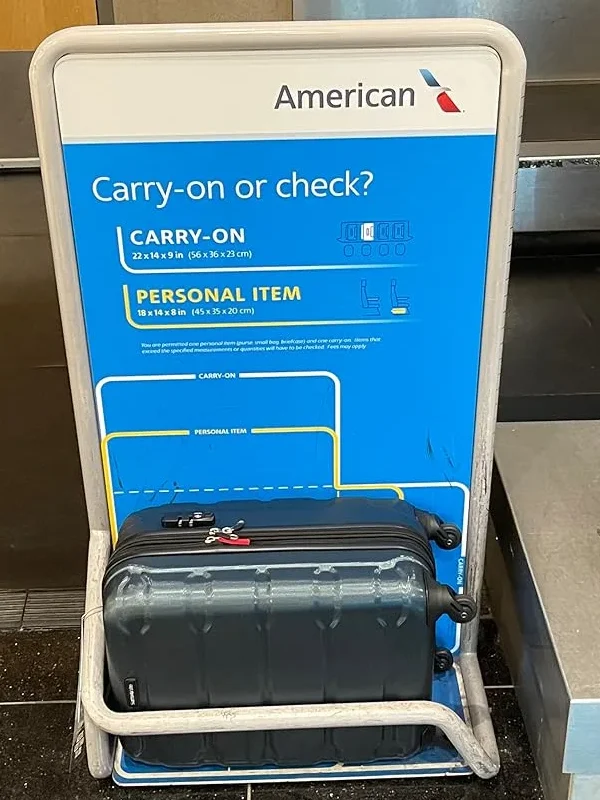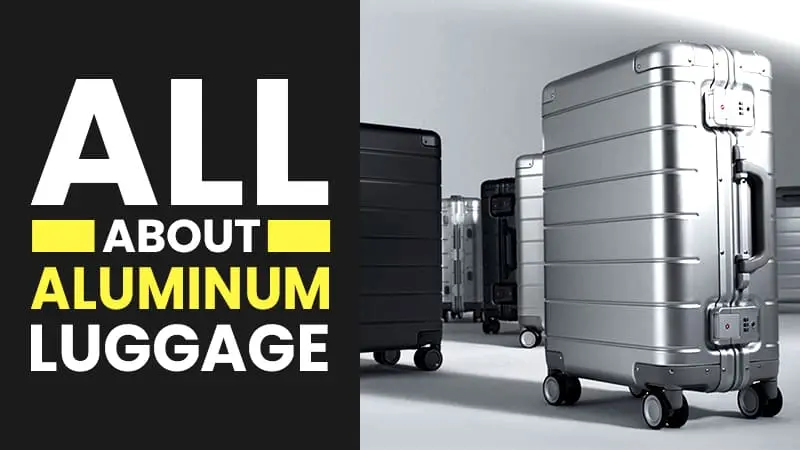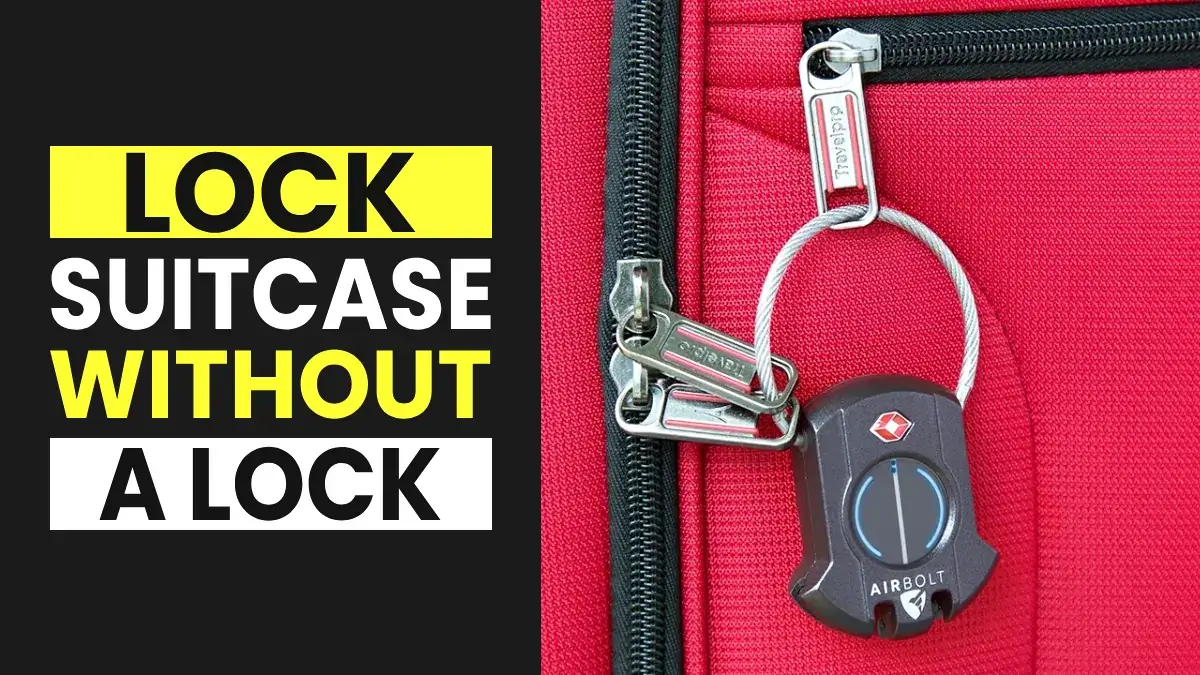What is a Carry-On Bag? | Everything You Need to Know about Carry-On Luggage
Getting ready for a trip is exciting but figuring out what kind of bag you need and how to bring it on planes can be a headache. What is the perfect dimension and weight of carry-on luggage and can you bring a backpack or a duffel bag as carry-on luggage? If these are the questions bothering you, you’ve come to the right place.
This guide is all about addressing the confusion related to carry-on luggage. We’ll break down frequently asked questions about carry-on luggage, including how many carry-on bags are allowed, how heavy a carry-on bag can be, whether a duffel bag and backpack can be carry-ons and much more.
So stay with us till the end of this guide on the topic “What does a carry-on bag look like?” so that you can have all your questions answered and travel seamlessly without any stress.

Table of Contents
What does a carry-on bag look like?
The Standard Size of Carry-On
What a carry-on bag looks like depends on the standard size that most airlines follow. Most airlines in the United States follow a standard carry-on size limit of 22 inches tall, 14 inches wide, and 9 inches deep. The most important thing to keep in mind is that this includes handles, wheels, and any other protruding part of your bag or luggage.
A carry-on bag is equal to or within the dimension of 22 × 14 × 9 inches, which is the safest and most common standard size of carry-on luggage. A carry-on bag can be in various shapes and types like a backpack, duffel bag, or luggage and it’s kept in an overhead compartment in planes.
Also check out: What Size Luggage for a 1-Week Trip?

Exceptions: Linear Inch Rule
The most common and standard size of a carry-on suitcase is 22 × 14 × 9 inches, but there are some exceptions that you must be aware of. Most airlines follow the above standard measurement for carry-on luggage but a few airlines use the linear inches rule, mainly popular for checked suitcases, to measure carry-on bags as well.
The linear inches rule is simply the sum of the length, width, and depth of your carry-on bag, and this sum should not exceed a certain limit, which is generally 45 inches. This means that the total length, width, and depth of your carry-on luggage should be less than or equal to 45 inches.
Apart from the standard size, a carry-on bag can be in various shapes in some cases, depending on the airline, but they mostly follow the standard 22 × 14 × 9-inch size so that they can comply with almost every airline and can easily fit into the overhead compartments.
Important Note
We’d recommend you double-check the specific carry-on bag or luggage requirements for the airlines you specifically want to fly with. There can be little variations depending on the airlines so make sure to check your airline website on your own.
Also read: Carry on vs Checked Luggage: Which One You Should Choose?
How do airlines measure carry-on bags at the gate?
You might be wondering how airlines measure carry-on bags—do they measure them manually or use any other method?
Let us tell you that most airlines use a sizer gauge at the gate to ensure that your luggage or bag meets the carry-on requirements. This sizer is made from a metal frame with dimensions according to the specific airline. If your luggage easily fits inside the size, you’re good to go.

But if luggage doesn’t fit inside the sizer and gets caught, this means that your luggage is less likely to fit in the overhead compartment inside the cabin of the plane. In this case, you might be asked to check your luggage in or pay oversized bag fees.
To avoid this hassle, you must ensure that your luggage falls within the restrictions of the airline you plan to fly with.
Also read: Carry on vs Personal Item: What Should You Choose?
Do luggage or bag manufacturers take care of the airlines’ carry-on guidelines?
The simple answer is “not always.”. This is where most travelers get unknowingly deceived because some manufacturers manipulate customers with the size of their suitcases, no matter if it’s a carry-on or checked luggage.
This is not true for all the brands like Away, Tumi, Rimova, and many other manufacturers that do consider and follow the guidelines properly. However, a few brands, including many well-known and popular luggage brands, manipulate their luggage size.
They sell them carry-on suitcases but when you get to the airport, you’re asked to check your luggage in or pay oversized bag fees. This happens even more in the case of checked luggage because it sometimes exceeds the 62 linear inches rule, which is the standard followed by almost every airline.
Always make sure that your carry-on luggage follows the standard carry-on size, including the wheels and handles.
Also read: Ultimate Guide to Luggage Size and Linear Inches Rule

Can a duffel bag be a carry-on?
Yes, a duffle bag can be a carry-on bag for your flight, but before you travel, you must keep a few things in mind.
You can use a duffel bag or a carry-on bag as long as it doesn’t exceed the standard carry-on bag limit set by airlines which is 22 inches long by 14 inches wide and 9 inches deep. It also includes the wheels and handles of your bag.
When you pack your duffel bag, make sure your bag stays within these guidelines after packing. We’d recommend you get a duffel bag with a structured design that can hold its shape well when packed so that it can be measured easily.
Also, consider choosing a duffel bag made from a lightweight material like nylon or polyester to help you stay within the weight restrictions as well.
Can a backpack be a carry-on?
Yes, you can also use a backpack as carry-on luggage. It’s a popular and convenient choice because of various advantages.
However, there are a few things that you must keep in mind when using a backpack as carry-on luggage.
A backpack can be a carry-on as long as it meets the standard size of 22 × 14 × 9 inches, including wheels and handles if there are any. This means that the dimensions of your backpack should not exceed 22 × 14 × 9 inches.
Another thing to keep in mind is to avoid overpacking your backpack because overstuffed backpacks are very less likely to fit in the overhead compartments and meet carry-on guidelines. So pack strategically to ensure that your backpack stays within the limit.
Apart from size restrictions, airlines also have weight restrictions for carry-on, so make sure that your backpack also meets weight restrictions as well. We’d highly recommend you check the carry-on guidelines of the airline you’re planning to fly with.
Related: Does a Purse Count As a Carry-on or Personal Item?
Frequently Asked Questions about Carry-on Bag
Is it worth it to buy a carry-on bag?
Yes, it’s worth paying for a carry-on bag or luggage, especially if you travel for short trips, weekends, or business trips. A carry-on bag is easy to handle across the entire journey and stays with you all the time. The best thing is that most airlines, except a few, allow you to bring one carry-on bag for free and help you enjoy freedom and mobility.
What is the size of carry-on luggage?
The standard and widely accepted size for carry-on luggage is 22 × 14 × 9 inches. This means that the length, width, and depth of your luggage should be equal to or less than 22 inches, 14 inches, and 9 inches. If the carry-on bag or luggage exceeds this limit, you might be asked to check it in or for oversized bag fees.
What is the difference between cabin baggage and checked-in baggage?
Cabin Baggage (Carry-On): This is the luggage you bring onto the cabin of your plane. It stays with you all the time and is kept in the overhead compartment above your seat. It’s accessible during the flight.
Checked-In Baggage: This is the luggage that you check in at the airport. This luggage is kept in the cargo hold of the plane and is inaccessible during flight. This luggage is always bigger than cabin or carry-on luggage. Once you reach your destination, you need to claim it at the baggage carousel.
Looking to explore more Luggage Brands? Check out our Huge A-Z List of EVERY Luggage Brand to find the perfect luggage set for your upcoming travels!
Heading abroad? Don’t forget to set up your eSIM to stay connected. Check out AIRLO for an easy and affordable eSIM you can set up in minutes!







